If you’ve been kicking around OTT or the airsoft world for a bit, you’ve probably heard talk of something called a “hop up.” But what is this all-important component? How does it work? What do I need to know about it?
Now, if you’ve got questions, we’ve got answers.
We’re going to take a closer look at everything hop-ups, from what it is and how it works to different types of hop-ups and how to adjust them.
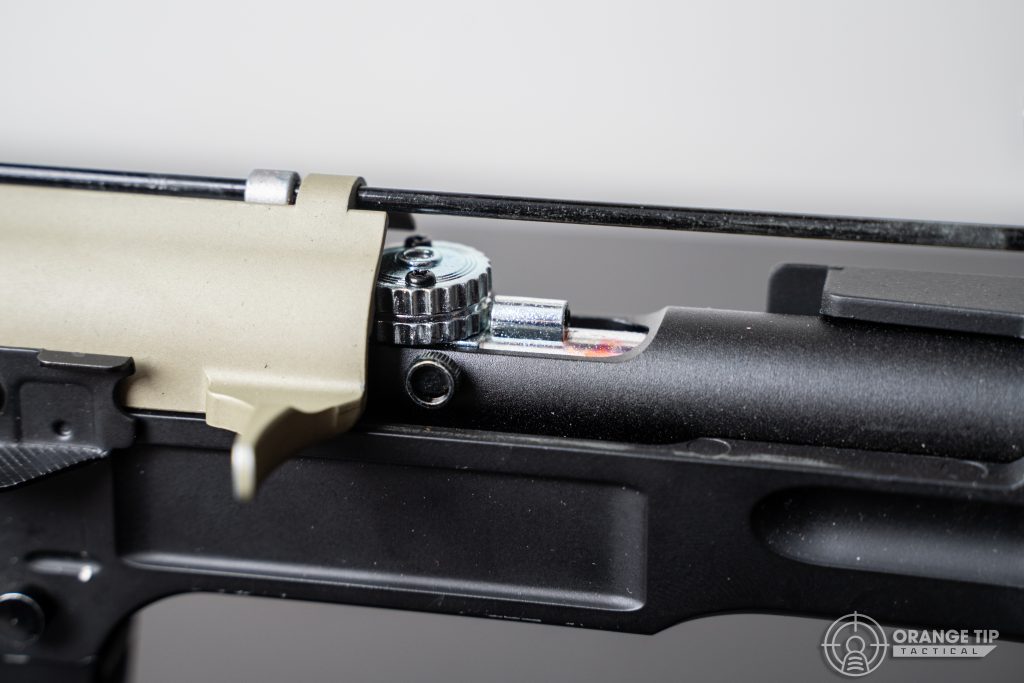
Ready to jump in? Let’s do it!
What is a Hop-Up and How Does It Work?
In short–hop-ups make your BBs fly straighter over a longer distance.
Long answer? A hop-up is a device that puts a backspin on a BB, which helps it fly much further without dropping as quickly, which is known as the Magnus effect. This backspin reduces the air pressure at the top of the BB, which decreases the rate at which the BB falls.
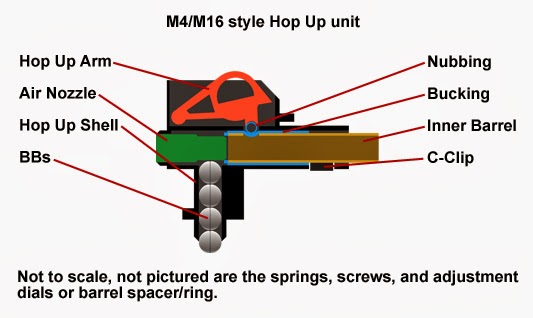
Hop-up units are essentially a chamber that contains a rubber bucking that the BB passes through, where a slight protrusion (called the nub) hinders the top of the BB for a split second and imparts a backspin. The bucking is made of rubber, which allows for some compression so the BB isn’t slowed too much and the bucking won’t wear as quickly.
These backspins can exceed 120,000 rpm, but hop-ups are adjustable so that players can fine-tune the performance of their gun to their personal preferences.
The Magnus Effect & Hop-Up Physics
Science geek? Keep reading. If physics doesn’t ring your bell, skip this section.
As we mentioned, the Magnus effect is what makes this whole thing work the way it does, so we wanted to geek out a little and talk about how this causes lift, and farther flying BBs–not to mention, a basic understanding of applied physics will help you learn how to adjust your hop-up to get what you want out of it.
Basically, when a cylindrical or a spherical projectile (like a football or your BB) is moving through the air, there is a surface layer of non-moving air, called the boundary layer. Hop-ups take advantage of the way this air can be thrown off a projectile. When a spin is introduced to the projectile, it throws off this boundary layer at an angle.
The exact angle depends on the direction of the rotation. If we look at Newton’s Laws, we see that, in order for air to be thrown in one direction, the spinning object must move in the opposite direction.
So forcing a BB to spin backward as it travels through the air would cause it to throw the boundary layer downward and to the rear, creating lift.
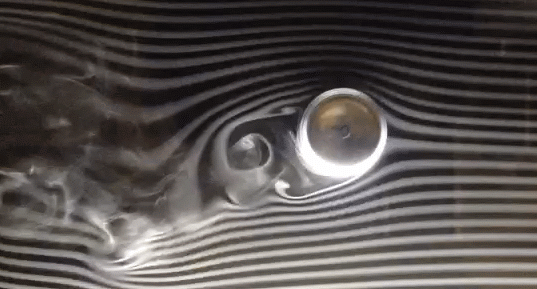
This lift is what causes the BB’s normally parabolic flight (meaning that it falls as it travels forward), to level off, meaning that the BB can travel much, much farther before it eventually falls far enough to impact the ground.
Neat, huh?
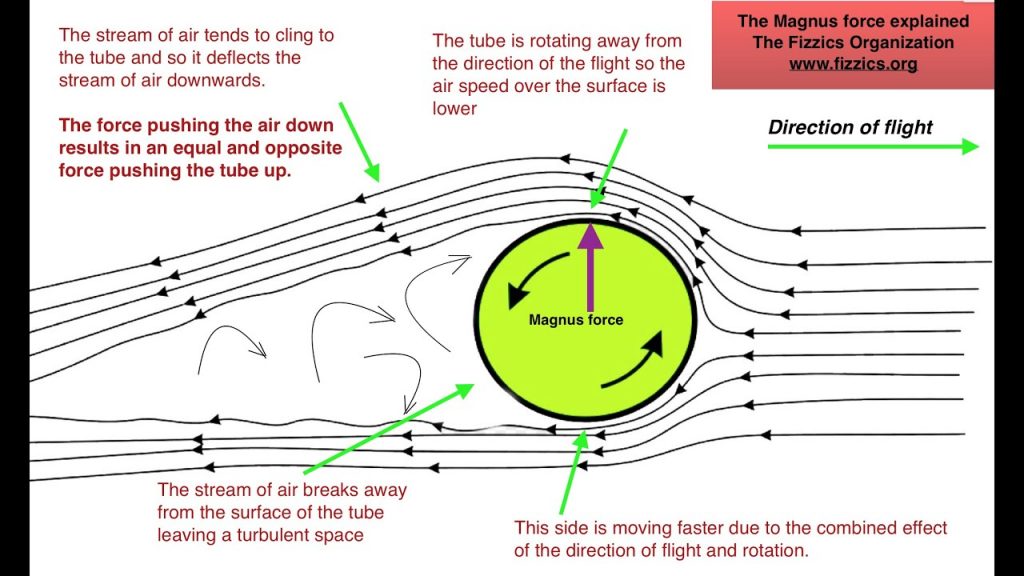
Okay, you may be asking, but if the BB is experiencing lift after a backspin has been imparted in the first inch of the barrel–doesn’t it just scrape its way down the top of the entire length of the barrel. That doesn’t seem good, right?
I hear you–it definitely sounds like that would happen, but it’s not quite true, thanks to MOAR PHYSICS!
I told you to skip this part if you’re not into physics, so you only have yourself to blame if you’re still reading this.
Anyways, air over the top of the BB is necessary to create the Magnus effect, and if it’s scraping the top of the barrel, there is no Magnus effect happening–which means no more lift and no more scraping the top of the barrel.
At best, the BB might bounce down the length of the barrel, but that isn’t what actually happens, either.
There is a massive pressure difference on either end of the barrel, which means that there isn’t much airflow around the BB. This also means that the vertical force caused by the Magnus effect is also not much–until the BB leaves the barrel. Because most of the pressure comes from behind the BB as it accelerates down the barrel, the Magnus effect doesn’t take, well, effect yet.
Once the BB leaves the barrel, the intense pressure from behind dissipates, and the pressure around the BB equalizes, which means the Magnus effect can take over.
TL;DR, the Magnus effect doesn’t do much until the BB is out of the barrel, so don’t worry about it rubbing the top of your barrel.
Many thanks to Let’s Build One for their awesome lesson on BB physics, which we summarized a bit.
Types of Hop Ups
Now that your head is spinning like a BB from that physics lesson–let me tell you that there isn’t just one type of hop-up.
Wait–stop crying. Come back. I promise it gets easier from here.
There are actually many types of hop-ups (and endless variants), but really, there are only three types you’ll encounter frequently, and these are the Standard Hop, Flat Hop, and the R Hop. See? Not that bad.
We’ll take a little closer look at these types of hop-ups so you can see how they work before we get into how you adjust them to customize your BB backspin.
Standard Hop
This is what you’ll find in most budget AEGs, and is pretty easy to work with. An arm is attached to a nub (which is actually the technical term for that part), which supports the rubber bucking. The bucking is what actually makes contact with the BB.
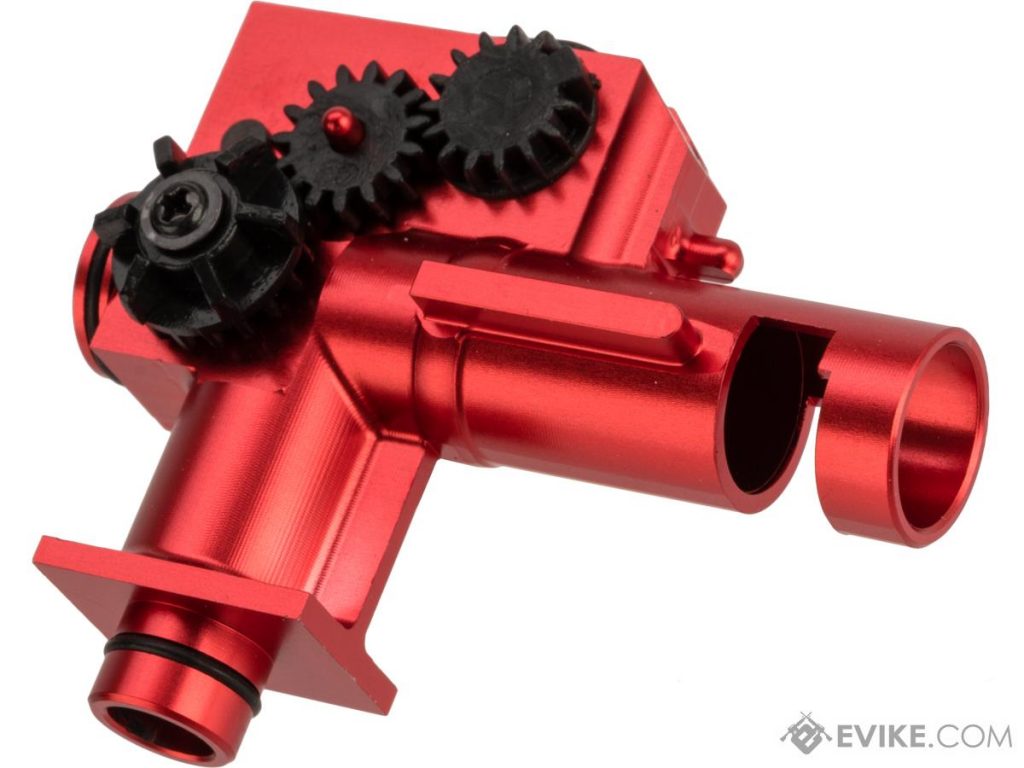
The arm is adjustable, and allows users to set how much pressure is placed on the BB by the nub. Commonly, a teeny adjustment wheel behind the dust cover is how you’ll adjust your hop-up.
Flat Hop
This is a slightly modified take on a Standard hop, which is intended to slightly improve the amount of surface that comes into contact with the BB. Essentially, it’s a longer nub, so the BB is in contact with it for a little bit longer than it would be with a standard nub.
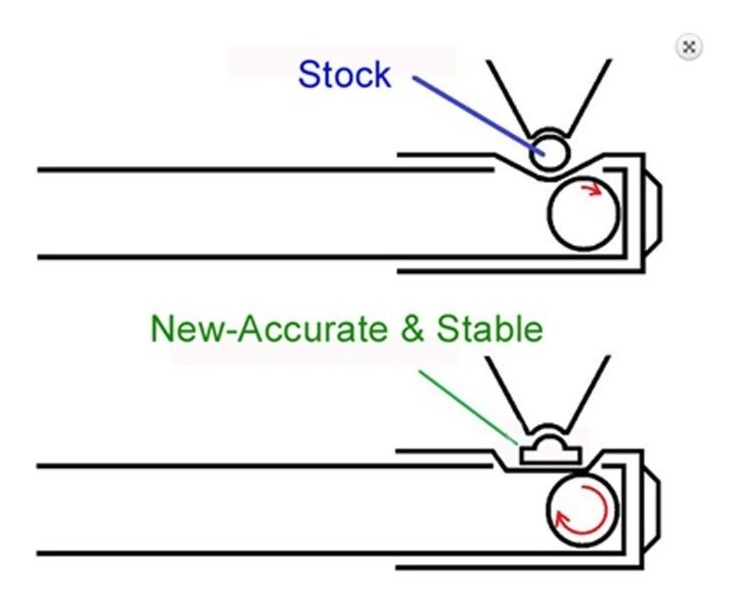
What this does is stabilize any wobble in the BB and impart a stronger backspin.
Flat hops can be adjusted the same way as a Standard hop, so they’re great for modding beginners.
R Hop
Want to really boost your performance? An R hop will do that, but be prepared to struggle a bit with it. If you get an R hop installed and tuned correctly your first time, you’re an airsoft god.
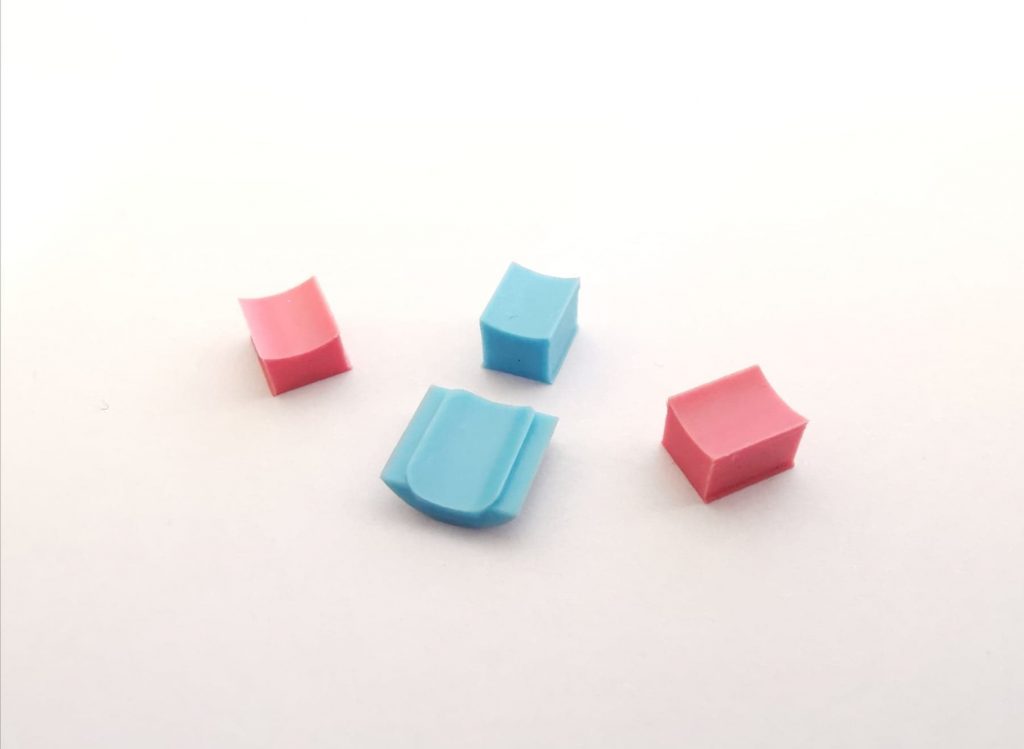
That doesn’t mean you can’t have one, though! If you’re crafty and patient, you can definitely learn to mod your own R hop. For the rest of us, there’s always techs!
An R hop takes the idea of a Flat hop and turns it up to 11. Rather than just using a patch of rubber at the very top of the barrel that skims the BB, an R hop uses a rubber saddle that covers the entire top half of the barrel for the length of the hop-up.
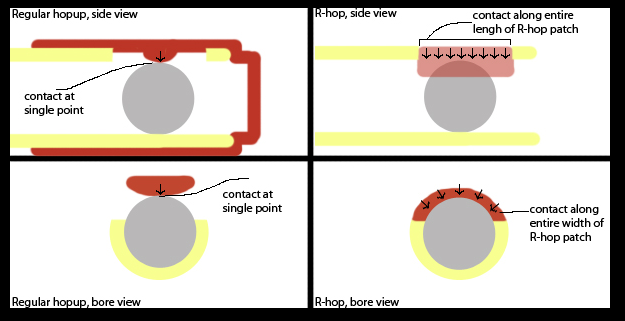
This means that the BB doesn’t just come into contact with the bucking at one point, but rather across half the circumference of the BB. This gives you far more accuracy and range than other hop-ups provide…. so it’s easy to see why R hops are popular, despite the difficulty.
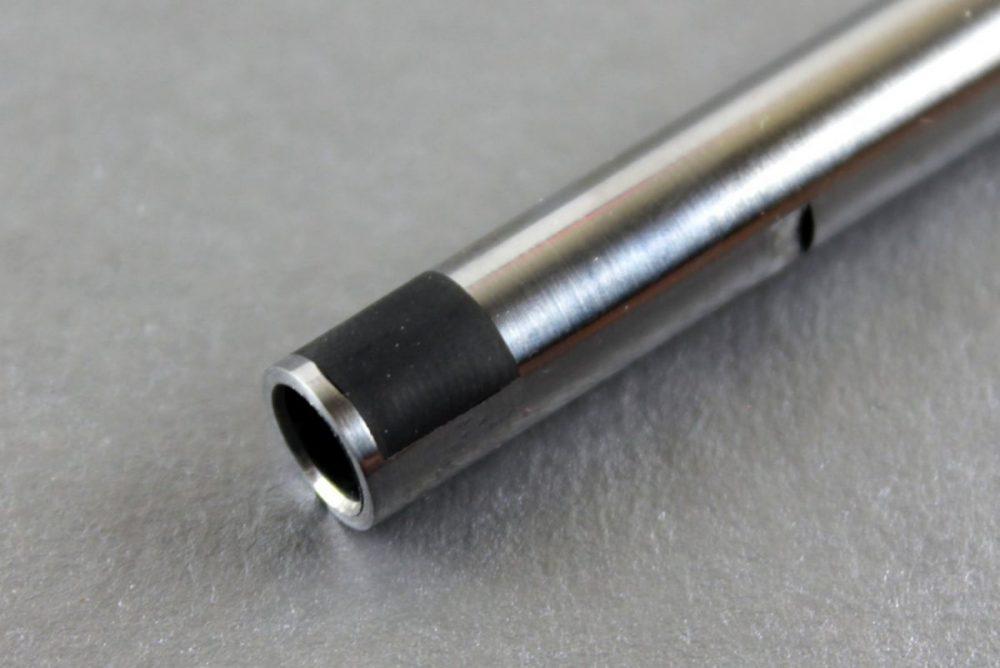
It’s also worth noting that you can find pre-tuned sets that contain everything you need to install your very own R hop—so it doesn’t even have to be that difficult!
Buckings and Hop-Up Nubs
Okay, these aren’t technically a type of hop-up, but both of these parts are critical to the effectiveness of your hop-up.
The bucking is, as we said above, the little rubber piece that comes into contact with your BBs to impart backspin. It also is responsible for providing an airtight seal between your barrel and air nozzle, which is critical for your gun to like… work.
The nub is, as also mentioned above, a small piece that pushes down on the bucking and holds it in place for the BBs to come into contact. Nubs are modifiable, and changing them changes how the BB is affected by the bucking.
Both buckings and nubs are made of rubber, though exactly what type of rubber depends on the player’s preferences and playing conditions. A rubber nub prevents BBs from wearing out the bucking faster than normal, so it’s important to make sure that it has the right amount of give.
Generally speaking, the lower temperature a bucking can tolerate, the softer the rubber is. Softer rubbers provide more traction and a stronger spin, while harder rubbers offer more reliability and durability.
When shopping for new buckings and nubs, make sure that they’re compatible with your gun. There are two common types of inner barrel cuts–AEG and sniper or pistol. Don’t waste your money buying the wrong one.
How to Adjust a Hop-Up
Okay, home stretch, people.
Adjusting a hop-up is an easy maintenance step that every player should know how to do, especially since it plays such a big role in your gun’s accuracy and range. Fortunately, it’s not too hard.
On pretty much every AEG, you’ll find the hop-up system behind the dustcover or when the bolt is pulled back. Peek in there and you’ll usually see a little wheel (or slider, as is often the case with AKs) that will let you tune the hop-up. There are also rotary systems, which allow for more precise adjustments.
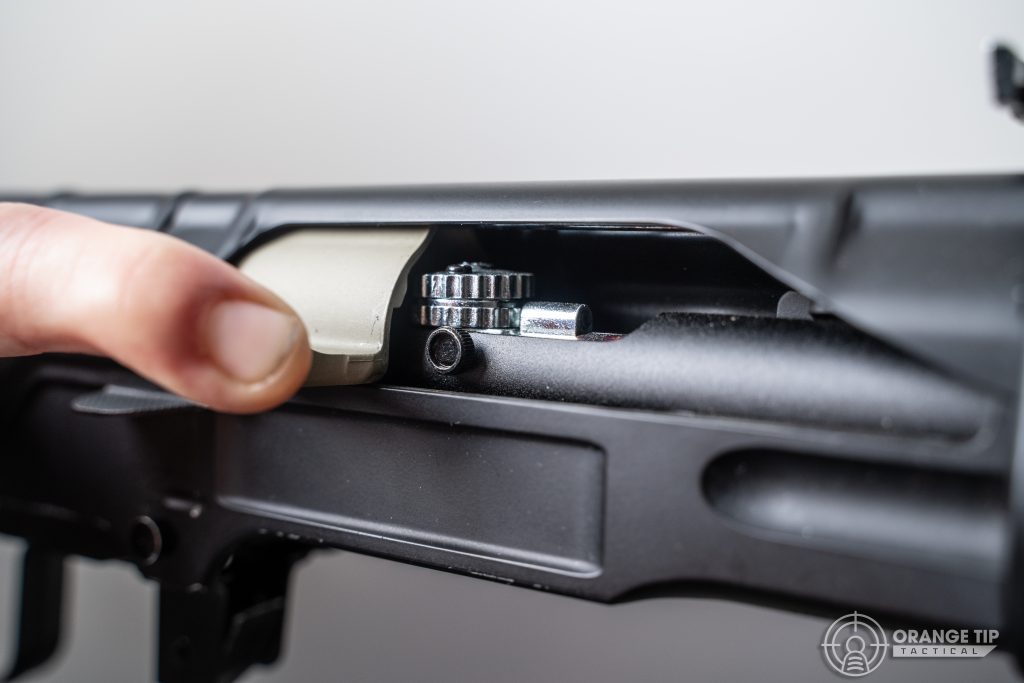
Once you’ve found that and figure out how to adjust it, it’s time to dial it in. And how do you do that? By shooting. A lot.
Find a safe, open space and start shooting. Ideally, you’ll want to warm up your hop-up rubber with about 20 rounds before you really get into adjustments.
Tweak your hop-up until you’ve achieved a BB flightpath that leaves the barrel in a slight upward trajectory, levels off for a good distance, before dropping in the last 30 feet or so. Once you’ve got this, you should be good to go!
Enjoy blasting the snot out of your enemies.
Conclusion
And that’s it, folks! You’re well on your way to being an expert in everything hop-ups, and, of course, you are going to kill it at parties with all your new-found physics knowledge.
Best of luck out there, y’all!
Have any favorite hop-up components or tips to adjust hop-ups? Questions about adjusting your own hop-up or working on your gun? Leave us a comment! Want to keep up with us? Give Orange Tip Tactical a like on Facebook!

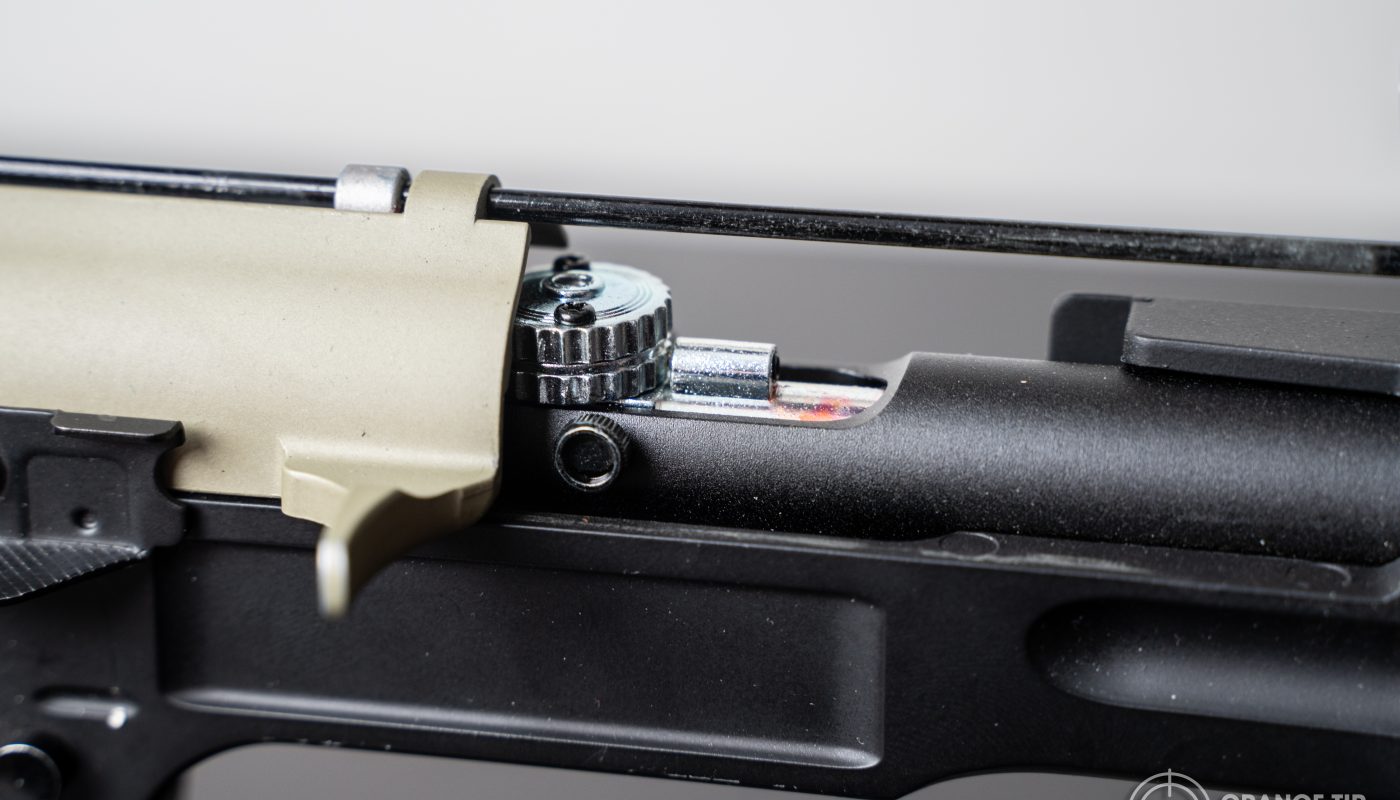
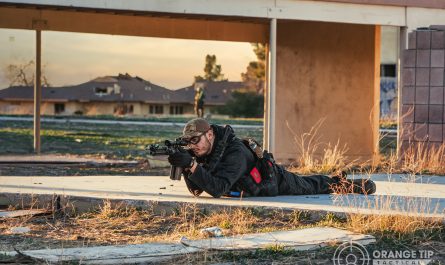

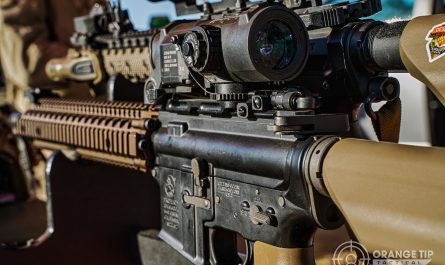
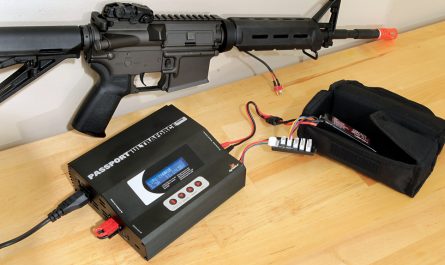
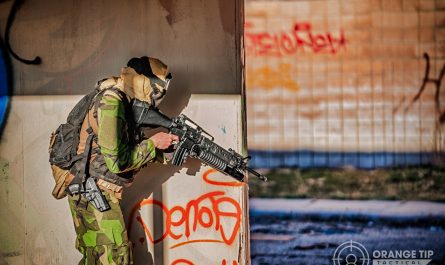
One thought on “Everything You Need to Know About Hop Ups”